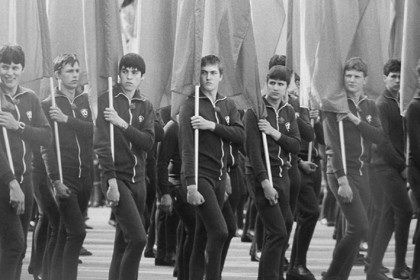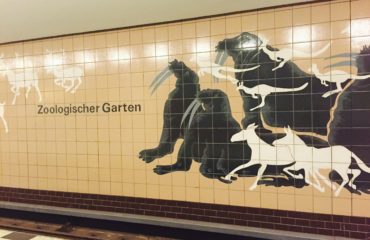
The film “Goodbye Lenin!” was released in theatres in 2003, instantly becoming a cult.
This is because, through the stories of the protagonists, illustrates very clearly and with brilliant irony the phenomenon of “ostalgia” (from the German “ostagie”, a compound word from the merger of “ost” east, and “nostalgia” that nostalgia), the nostalgia of the German Democratic Republic (DDR) and the sense of affection for all the products of rude German socialism.
The ostalgia has many faces.The most popular is due to the design of everyday objects, furnishings and especially the unbreakable myth and absolute pride of the motor industry in East Germany, the Trabant: the “real” people’s car. On another side, a little less bright, we could see the advantage of a stable existence under the protective wings of a state which was used to everything, yet there is another side of the darkness, the greyness of life passed within the structures of a rigid communist dictatorship which forbade all individual freedoms and that all suspected. After reunification, all of the assets of the GDR no longer had any reason to exist but luckily it all came to be part of the contemporary history of Germany, thanks to photography.
Sybille Bergemann, Harald Hauswald, Ute Mahler and Werner Mahler in those years are four young photographers with their different ways of telling the daily life of the “times of the East” (Ostzeist – the title of the exhibition) allow us to observe what it really meant to be people in the GDR from the 70′s until the fall of the wall and as a result of all the “dream” socialist.
The miners working naked in the lignite mines that seem to come from a century earlier, the rites of May Day parades read through jaded eyes of protesters who all seem to wish their governments except long live socialism, the gray and smokey dancing where they serve meatballs and sausage, and where on Wednesday the entrance was free for single women and men who were waiting to be invited to the dance, or even the young circus acrobats, overgrown boys who demonstrate at least twice the their age, and the sarcasm of incomplete statues of Marx and Engels, and also photos of fashion sparse and poor a range of unlikely contexts. Getting lost in this collection of images is a little like spending an afternoon of a rainy day with your hands in an old box of photographs, but also having the chance to observe from a vantage point in the work of these talented photographers.
In 1990 this “dream team” plus other photographers of the former GDR founded the agency OSTKREUZ (Cross East), which takes its name from the largest and most important city rail station in Berlin in those years facing the western border of the wall.Today it is the most important agency in Germany.
 English
English  Italiano
Italiano 



